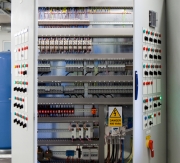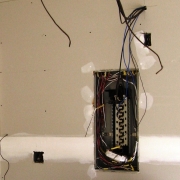How to Install a GFCI Outlet
What kind of electrical receptacle should you install in the kitchen or bath? The answer is a GFCI outlet, or a ground fault circuit interrupt outlet. A GFCI (or GFI) outlet should be installed in any place where electricity might come in contact with water; such as a kitchen, a bathroom, a laundry room, garage, or exterior space. Basically, a GFCI outlet will sense when electricity is going to pass through a person’s body and it will shut off before the shock is delivered. Installing this type of outlet is only slightly more complex than installing a standard three-pronged receptacle. Join the At Home channel’s host, Jeff Wilson, for a tutorial on how to install a GFCI electrical outlet.



